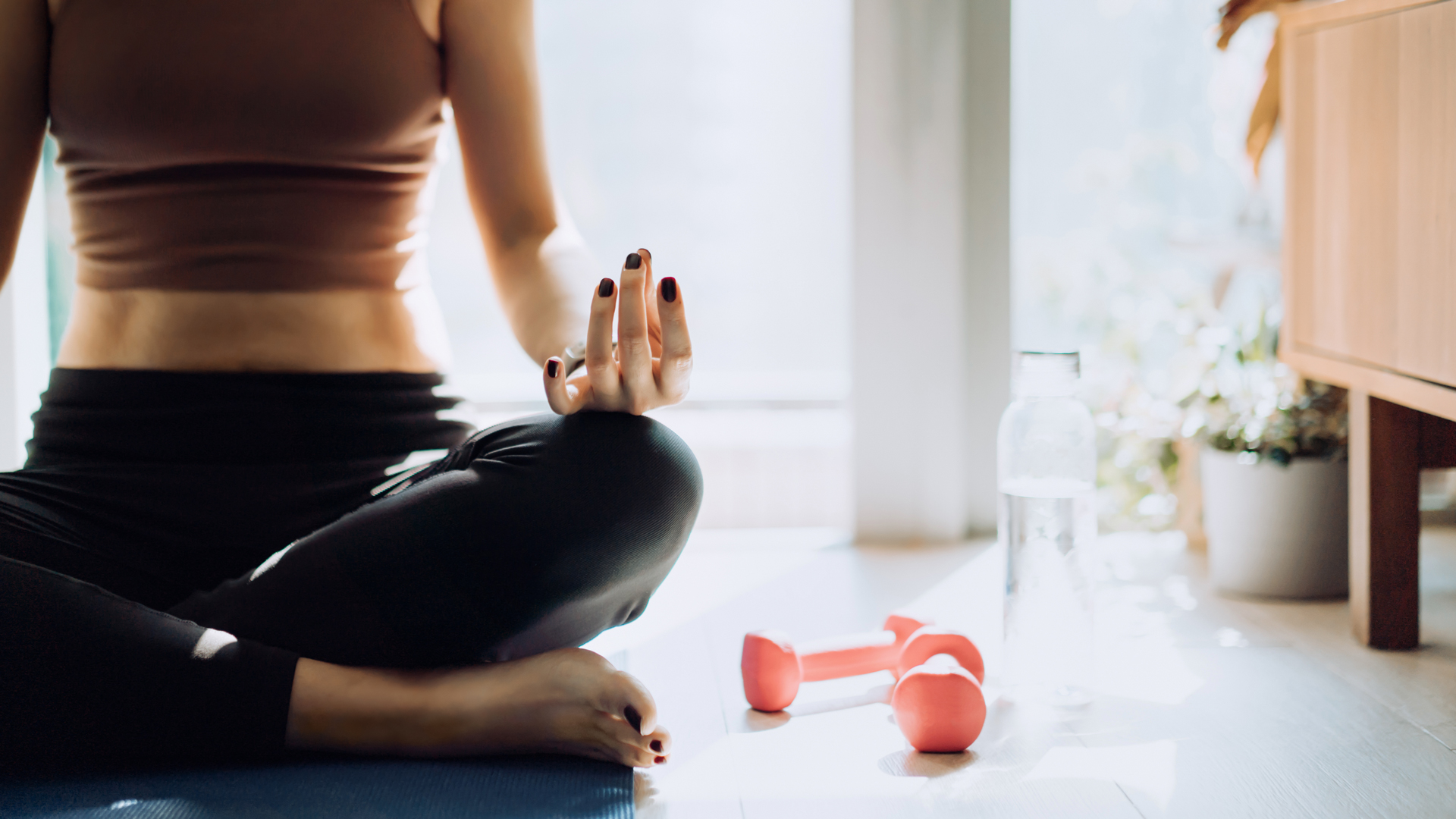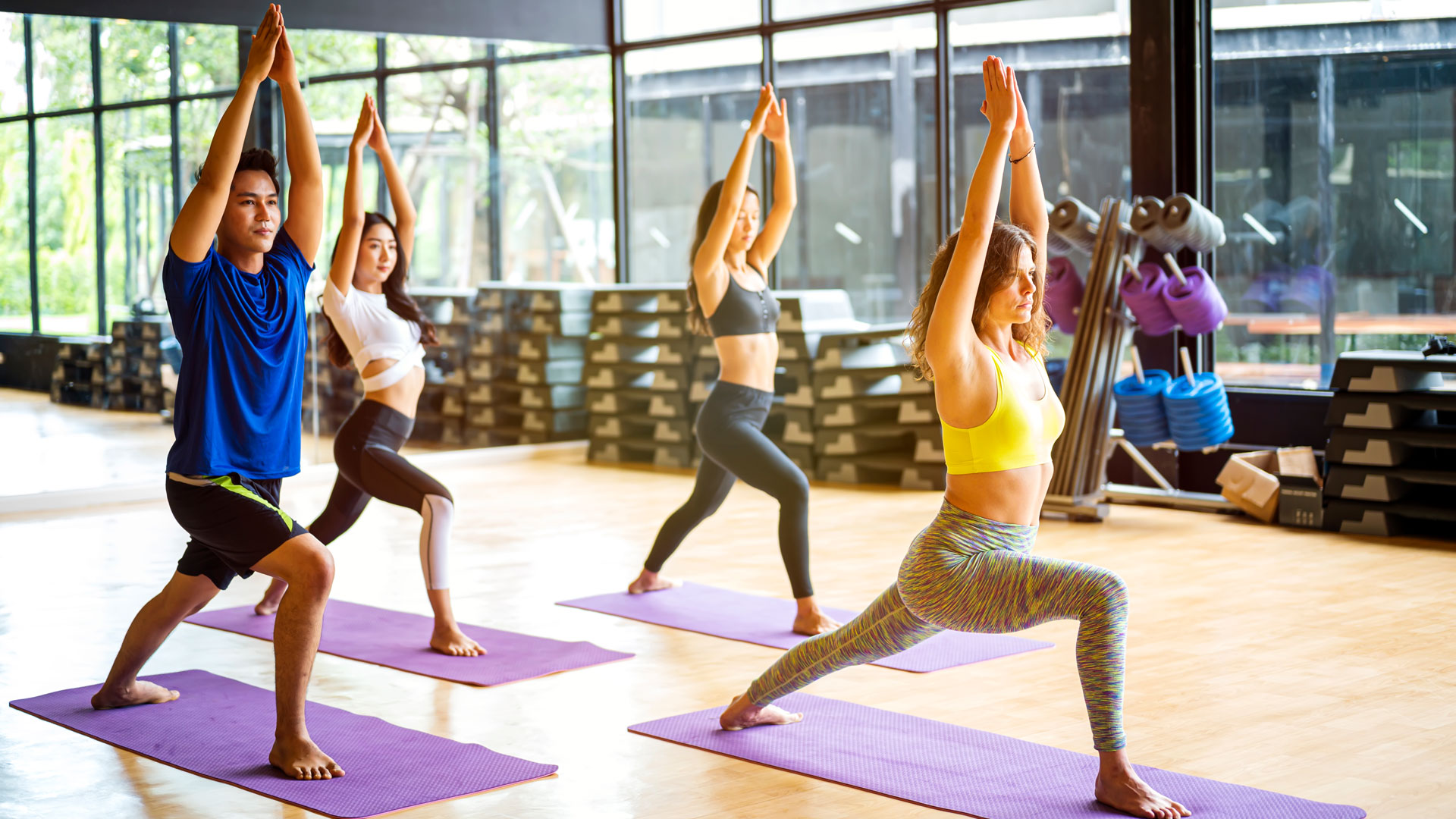How useful is yoga in a weight-loss journey?
There are many health benefits to yoga but does it help you lose weight? We examine the pros and cons of using yoga for weight loss.

With the presence of yoga on social media claiming to help you lose weight, it’s important we consider the evidence behind these claims. While there are many other health benefits associated with a regular yoga practice, the evidence is mixed on whether or not it helps you lose weight, with there being a few caveats worth mentioning.
Our yoga expert, Kat Bayly, has been teaching yoga for over 10 years and has completed various yoga teacher trainings over the years. She comments, “One of the many questions I get asked as a yoga teacher is, does yoga help you lose weight? Moving your body is always going to be helpful in any weight-loss journey and yoga is great for this. While the amount of calories you burn will depend on how much dynamic movement is involved in the yoga practice you do, yoga can help you become present with your body giving you a sense of clarity. This clarity and mental focus can help us stick to our goals and become more mindful in how we live. This ultimately has an impact on the food we eat and the lifestyle we choose, all helping us to lose weight more holistically.”
Let’s explore the pros and cons of adding yoga into your weight loss journey to see if it can make a real difference and if so, how it might help. If you’re tempted to try a practice, be sure to grab one of the best yoga mats.
Does yoga help you lose weight?
Harvard Medical School acknowledges the overall benefits of yoga go beyond the mat. They found those who practiced yoga were more mindful eaters meaning they were more present while eating. These findings are supported by a recent study published in the Obesity Science and Practice journal that found women who took part in yoga for 24 weeks following a behavioral weight loss treatment reported fewer dietary lapses than the control group. However, the Harvard Medical School found years of practice and the length of sessions undertaken per week were associated with participants’ mindful eating scores. This suggests yoga isn’t a quick way to help you lose weight and that it requires consistency, perhaps over years, to see these effects. This was shown by the researchers also finding that the people who practiced yoga once a week for a minimum of 30 minutes over at least a four-year period gained less weight during middle adulthood. However, for those who were overweight, researchers found they actually lost weight. Consequently, it appears yoga can help you lose weight but it is a slow process.
Interestingly, a recent study published in PLOS One looked at the implementation of yoga into a weight management program after weight loss treatment. Treatment groups undertook 2 weekly sessions of yoga for 12 weeks after a behavioral weight loss program. They found no difference in the treatment groups in terms of their weight loss after 6 months. But more importantly, they did find those who had high initial weight loss of more than 5% managed to lose significantly more weight after 6 months. This could indicate yoga acts as a good supplement to those who have already lost a significant amount, rather than those just starting out on their weight loss journey.
With some yoga practices being more gentle and others involving more flow and dynamic movements, it can be hard to know if they all help you burn calories which is effectively what’s needed to help you lose weight. We already know that if we move more, we burn more calories. However, our physical weight can fluctuate quite dramatically from one day to the next due to aspects such as hormones, the amount of sleep we’ve had, injury and levels of water retention. In order to specifically achieve weight loss, Harvard Health Publishing states that we must eat fewer calories than we burn to be in a calorie deficit. A Harvard Medical School article shows weight loss essentially comes down to simple math. As 3,500 calories are stored in one pound of body fat, we would need to cut 500 calories per day in order to lose one pound of body fat per week.
However, 30 minutes of Hatha Yoga has been shown to burn 120 calories for a 125-pound person, 144 calories for a 155-pound person and 168 calories for a 185-pound person, as found by a Harvard study. It appears the largest amount of calories burnt are for those who weigh more and, combining this with the knowledge that those who were overweight actually lost weight in the previously mentioned Harvard study, it implies yoga may be more effective in helping those who are already overweight to lose weight rather than those simply wanting to lose a few pounds for summer.
Get the world’s most fascinating discoveries delivered straight to your inbox.

- Related: Best exercise machine to lose weight
Does yoga help you build muscle and strength?
While there are a variety of types of yoga, all forms include moving through a number of poses (asanas). Over time, these help to increase flexibility and strength as the body adapts to holding these poses for longer.
One trial in the Complementary Therapies in Medicine journal followed 60 patients that presented with abdominal obesity who were practicing 90 minutes of yoga twice a week for 12 weeks. When compared to the control group, the yoga group showed a significant reduction in their abdominal circumference as well as an improved waist to-hip-ratio. The yoga group also showed reduced body weight and body fat percentage as well as an increase in body muscle mass percentage. Furthermore, a more recent article published in the Journal of Bodywork and Movement Therapies found 9 months of yoga increased the leg, back and hand grip strength of obese adults. This shows that yoga does build muscle effectively and can help those on a weight-loss journey to also build strength.
Meanwhile, The National Center for Complementary and Integrative Health also reported 63% of adults said yoga motivated them to exercise more regularly and thus increasing their chances of becoming stronger. However, a systematic review published in Obesity Science and Practice found there was limited evidence yoga increased physical activity in adults classed as overweight or obese. Consequently, it could be argued an increase in physical activity, or the motivation to exercise, comes down to each individual’s intrinsic motivation whereby someone performs an action, regardless of external stimuli or reward, with the action itself being seen as the reward. Some people love exercise for what it is whereas others struggle to motivate themselves to do it.
While yoga in itself may not be the most efficient way to lose weight, the research shows some evidence that those who practice yoga are more likely to be motivated to exercise, be in tune with their body and be more mindful eaters. This can all help in a healthy weight loss journey.

How does yoga improve your balance?
Yoga consists of several balancing poses as part of its practice which means that your balance will improve over time. This is because of the natural engagement of your core and other muscles that happens with regular practice.
In a review of studies published in the Journal of Alternative and Complementary Medicine involving a healthy population ranging from school-age to seniors, it was determined yoga improved balance as well as other physiological factors. A recent systematic review published in the Osteoporosis International journal corroborates this finding yoga had positive effects on balance when participants were compared to a no-intervention control, with the meta-analysis considered also indicating yoga improved static balance. However, the review in the Journal of Alternative and Complementary Medicine concluded that more detailed research would need to be carried out to determine the measurable amount of balance gained, as well as which postures contributed best to improved balance.
Significant gains in balance and improved flexibility were also observed in a yoga group study of college athletes published in the International Journal of Yoga in 2016. One group of subjects undertook 10 weeks of yoga practice as well as their regular training that involved resistance training and weight lifting, while the control group did no yoga on top of the other training. The results from the yoga group were significantly better at the end of the trial than the non-yoga group. If you want to know how to improve your flexibility, this is a positive sign that yoga could be adopted as a fundamental part of athletic training in order to enhance overall performance.
So, does yoga help you lose weight? Yes, when combined with a suitable and healthy calorie deficit or if you’re willing for the process to be very slow and steady. The evidence suggests yoga may be a good supplement to those already losing weight, rather than something to be relied on alone. However, what is clear from these studies is that yoga is a great option to strengthen muscles and improve balance.
If you are struggling with how you view your weight, please consider reaching out to these support networks in the US and UK:
National Alliance for Eating Disorders (US)
Amy is an Irish freelance writer living in London, UK, and specializes in fitness and wellbeing content. As a qualified dog groomer with over ten years of experience, she also writes extensively about pet care topics.
Amy has a degree in Creative Writing from London South Bank University and a Master of Arts in Scriptwriting from Goldsmiths University of London. She is a comedy scriptwriter who has had her work placed across a number of screenwriting competitions. She is also a member of the BFI Network x BAFTA Crew program. Amy is a health and fitness advocate with a passion for resistance training and tracking macros to achieve her goals. She’s also a big fan of yoga and Pilates, and fully believes that a balance of both practices helps build a strong core foundation and reduces injury.
- Kat BaylyContributing expert



